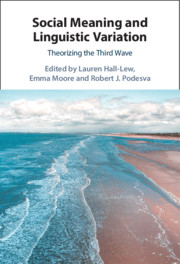Book contents
- Social Meaning and Linguistic Variation
- Social Meaning and Linguistic Variation
- Copyright page
- Contents
- Acknowledgments
- Figures
- Tables
- Contributors
- 1 Social Meaning and Linguistic Variation: Theoretical Foundations
- Part I Where Is (Social) Meaning?
- Part II The Structure of Social Meaning
- Part III Meaning and Linguistic Change
- Index
- References
Part I - Where Is (Social) Meaning?
Published online by Cambridge University Press: 30 July 2021
- Social Meaning and Linguistic Variation
- Social Meaning and Linguistic Variation
- Copyright page
- Contents
- Acknowledgments
- Figures
- Tables
- Contributors
- 1 Social Meaning and Linguistic Variation: Theoretical Foundations
- Part I Where Is (Social) Meaning?
- Part II The Structure of Social Meaning
- Part III Meaning and Linguistic Change
- Index
- References
Summary

- Type
- Chapter
- Information
- Social Meaning and Linguistic VariationTheorizing the Third Wave, pp. 25 - 150Publisher: Cambridge University PressPrint publication year: 2021

